My first decent catbird photos of the year.
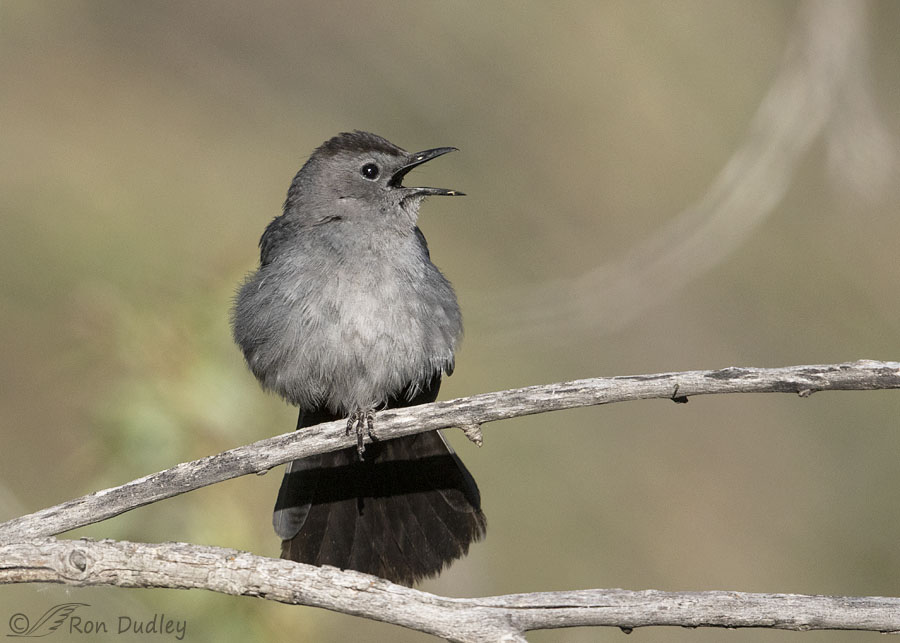
1/5000, f/6.3, ISO 800, Canon 7D Mark II, Canon EF 500mm f/4L IS II USM + EF 1.4 III Extender, not baited, set up or called in
I’ve been hearing and seeing Gray Catbirds in the mountains for weeks now. But they’ve been taking the ‘cat’ part of their name far too seriously as they consistently play cat and mouse games with me so decent photos of them have been as elusive as they are.
But yesterday morning this one came in close and mostly out in the open for long enough to give me a few (very few) shots before ‘he’…
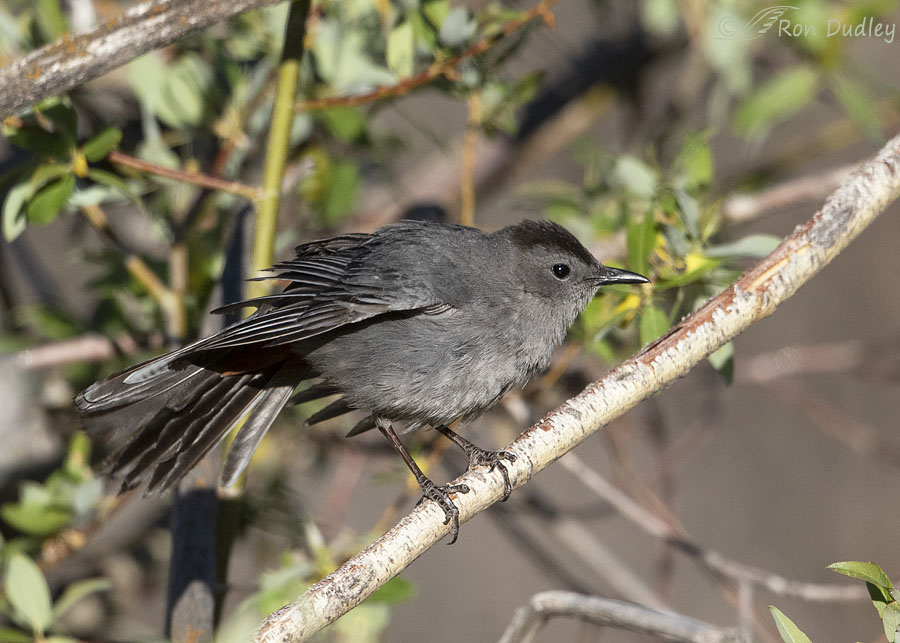
1/3200, f/6.3, ISO 640, Canon 7D Mark II, Canon EF 500mm f/4L IS II USM + EF 1.4 III Extender, not baited, set up or called in
dove down into the bushes to a spot where I suspect he thought he was hidden from my prying lens. But by skootching my lens and body as far forward in the cab of my pickup as possible I was barely able to get photos of him that were mostly unobstructed and I took a lot of them.
Even though I noticed little evidence that he was wet he acted just like a bird that was grooming after a bath. He did a lot of shaking, preening and…
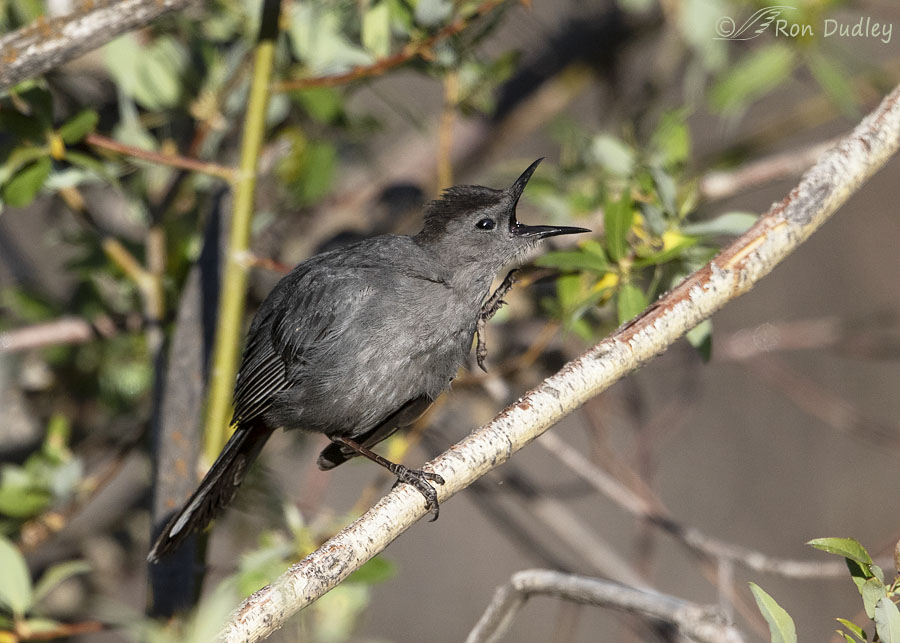
1/4000, f/6.3, ISO 640, Canon 7D Mark II, Canon EF 500mm f/4L IS II USM + EF 1.4 III Extender, not baited, set up or called in
scratching. I wonder what it is about birds that so often makes them open their beaks very wide, almost like they’re yawning, while they’re scratching under their chins.
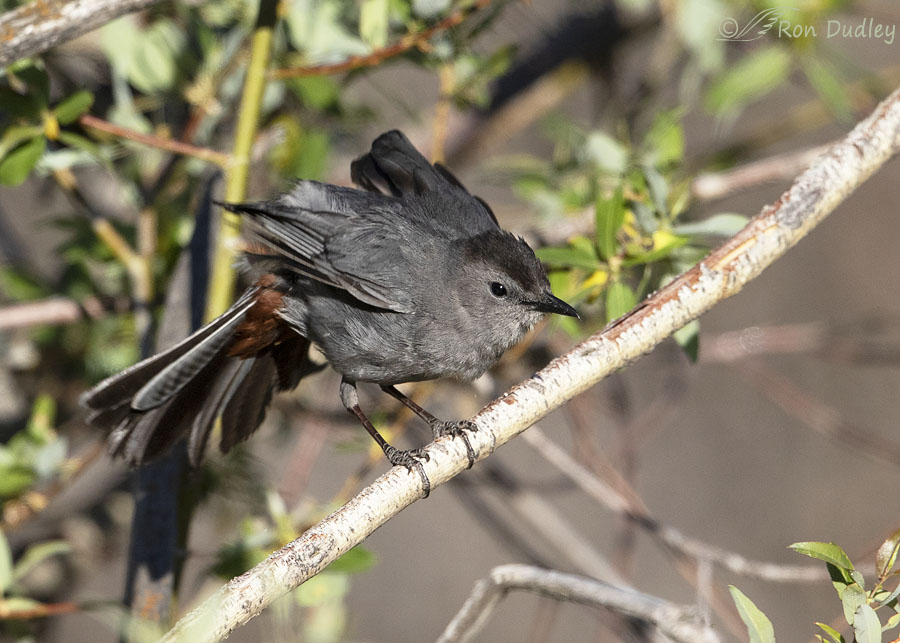
1/3200, f/6.3, ISO 640, Canon 7D Mark II, Canon EF 500mm f/4L IS II USM + EF 1.4 III Extender, not baited, set up or called in
But much of his time was spent shaking. There was water almost directly below him so I’m thinking he must have had a recent bath. He’d just had sufficient time to dry off enough that I couldn’t tell for sure that he was still damp.
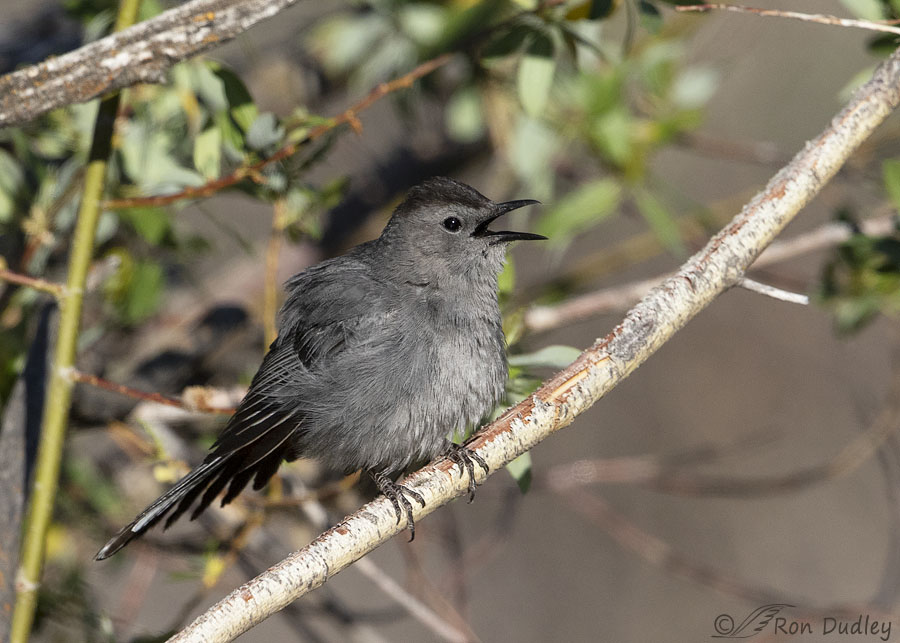
1/4000, f/6.3, ISO 640, Canon 7D Mark II, Canon EF 500mm f/4L IS II USM + EF 1.4 III Extender, not baited, set up or called in
Occasionally he broke out into brief bouts of calling but most of his time was spent preening.
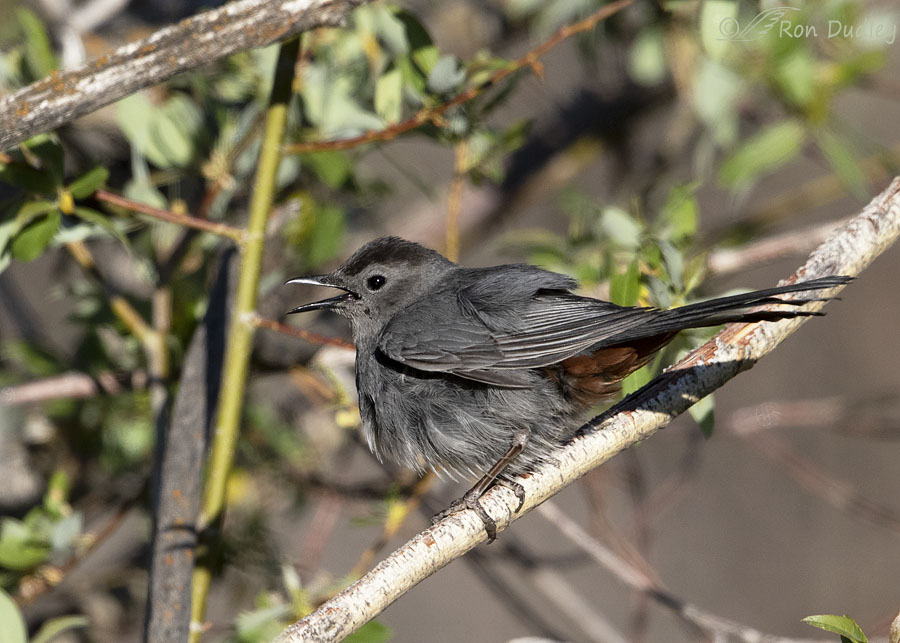
1/3200, f/6.3, ISO 640, Canon 7D Mark II, Canon EF 500mm f/4L IS II USM + EF 1.4 III Extender, not baited, set up or called in
The rich chestnut-colored undertail coverts of adult catbirds are usually so well hidden that many casual observers never see them and aren’t even aware that they exist. But the contortions this bird went through allowed me to see them many times.
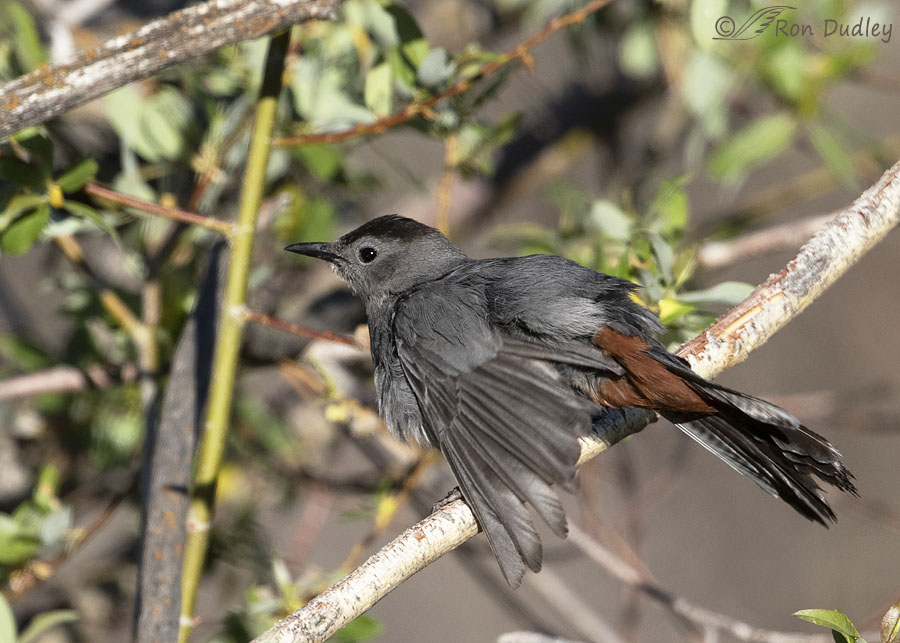
1/3200, f/6.3, ISO 640, Canon 7D Mark II, Canon EF 500mm f/4L IS II USM + EF 1.4 III Extender, not baited, set up or called in
Those chestnut feathers are actually fairly extensive, especially considering how unusual it is for us to see them. In the past some blog followers who see catbirds regularly have said that that they were unaware of the chestnut color until they’d seen my photos documenting it.
I was actually relieved when he finally flew off. I was in such an uncomfortable position pasted against my steering wheel it took me some time to recover when I could relax again. Having a bad back sure didn’t help the situation.
Hopefully next time I get a catbird in my viewfinder the setting will be less cluttered than this one but it’s typical habitat for them so I was pleased to get the shots I did.
Ron


I like these birds and don’t consider them drab at all. The grey is pretty rich and dark on their bodies, topped off by a black cap and those cinnamon undertail coverts plus an amazing repertoire of the songs and calls of other species. I believe they are have the largest variety of songs in their singing compared to the other North American mimids (mockingbirds and brown thrashers).
“…they consistently play cat and mouse games with me…” So should we call you Mickey, Mortimer, or Mighty?

All kidding aside, these are some really special shots of a difficult subject. Thank you (and your back) for taking one for the very appreciative team. And I really like the 3rd shot — reminds me of the faces my dad used to make while shaving.
“reminds me of the faces my dad used to make while shaving”
You saying that brought back very similar memories for me too, Marty. Fond ones.
Given that choice I’ll take “Mighty”.
Yet another beauty I will probably not see for myself. I am glad you got the opportunity even if ‘he’ did make you work for it. I do hope your back is not making you pay for the effort.
Thanks, EC. My back is back to what has become ‘normal’ for me so at least that’s some small bit of improvement.
Wonderful series, as I have stated many times I like to watch birds preen and bathe.
BTW lovely owl series yesterday, I guess I missed the post when it was originally done many years age. Working sometimes took precedence in the past.
Thanks on both counts, April.
I understand that ‘working’ thing. Or at least I used to.
Informative series, as usual. Especially love the chin scratch! Thanks Ron.
Thank you, Jamila.
Well, there you go again. What one could superficially consider a rather drab bird, you have revealed to be a captivating little jewel.
Great. They deserve the elevated status!
Super series! Just love that under tail…at first they seem like just a grey bird but then you see the little surprises. Also love that darker head which at first can seem just like a shadow. They really are one of my favorite birds of summer.
Thank you, Kathy. Yes, with that dark cap and chestnut beneath the rump they’re more distinctive than many folks think.
Throw in the crazy variety of their vocalizations and they’re pretty neat birds.
Excellent photography in spite of being crunched up against the steering wheel. I have seen that same mouth open yawning like behavior from other birds while scratching under the chin. I have never seen a Gray Catbird. Here they are winter birds and we show them as “accidental” meaning fewer than five sightings a season.
Thanks, Everett. Good to know others have also noticed the same behavior.
Beautiful and fun! Their slate grey coloring and the chestnut coverts are a wonderful combination. AHHH what’s being said “scratching”…..
Their slate grey coloring and the chestnut coverts are a wonderful combination. AHHH what’s being said “scratching”…..  Glad “he” cooperated!
Glad “he” cooperated! 
“Cooperated” as much as catbirds do, anyway. Thanks, Judy.